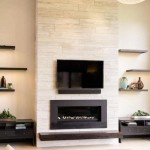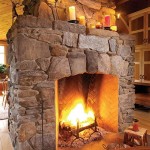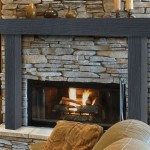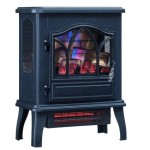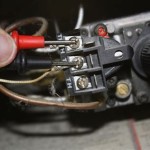Replacement Fireplace Insert: A Comprehensive Guide
A fireplace insert is a self-contained heating appliance designed to fit inside an existing masonry or factory-built fireplace. Replacing an old or inefficient fireplace insert can significantly improve heating efficiency, enhance aesthetic appeal, and even increase home value. This article presents a comprehensive overview of replacement fireplace inserts, encompassing factors to consider when selecting a new unit, different fuel types available, installation processes, and essential maintenance practices.
Understanding the Need for Replacement
The decision to replace a fireplace insert often stems from several factors. One primary reason is inefficiency. Older inserts may lack modern combustion technologies, resulting in a significant amount of heat loss up the chimney. This translates to higher heating bills and a less comfortable living environment. Another compelling reason is damage or deterioration. Over time, components within the insert, such as fireboxes, blowers, or electronic controls, can wear out or become damaged, impacting performance and safety. Finally, homeowners may opt for replacement simply to upgrade to a more aesthetically pleasing or technologically advanced model that better suits their needs and preferences.
A critical assessment of the existing fireplace and insert is essential before initiating the replacement process. This assessment should involve inspecting the chimney for any signs of damage or blockage, evaluating the dimensions of the fireplace opening, and determining the desired heating capacity for the room or area to be heated. Consulting with a qualified professional chimney sweep or fireplace installer is highly recommended during this stage to identify potential issues and ensure compatibility with the replacement unit.
Fuel Type Options: Advantages and Disadvantages
Replacement fireplace inserts offer a variety of fuel options, each with its own set of advantages and disadvantages:
Wood Inserts: Wood-burning inserts provide the traditional ambiance and crackling sounds that many homeowners find appealing. Modern wood inserts are significantly more efficient than open fireplaces, thanks to EPA-certified combustion systems that minimize emissions and maximize heat output. However, wood inserts require a readily available and affordable source of firewood. They also necessitate regular maintenance, including ash removal and chimney cleaning. Some areas may have restrictions or regulations regarding wood burning due to air quality concerns.
Gas Inserts: Gas inserts offer convenience and ease of use. They can be ignited with the push of a button and often include thermostatic controls for precise temperature regulation. Gas inserts are typically fueled by natural gas or propane. Natural gas is generally more cost-effective if a natural gas line is already available to the property. Propane requires the installation of a propane tank, which can add to the initial cost. Gas inserts produce less ash than wood inserts and require less frequent maintenance. However, they do not provide the same authentic wood-burning experience.
Electric Inserts: Electric inserts are the simplest to install and operate. They require only a standard electrical outlet and do not produce any emissions or require venting. Electric inserts are primarily decorative appliances, providing visual appeal and supplemental heat. While convenient, electric inserts typically offer less heating capacity compared to wood or gas inserts. Electric fireplace inserts can be placed in any room in the home, even one without a fireplace.
Pellet Inserts: Pellet inserts burn compressed wood pellets, offering a balance between the convenience of gas and the renewable nature of wood. Pellet inserts are generally more efficient than wood inserts and produce less smoke. They require a hopper to store the pellets and an auger to feed them into the firebox. Pellet inserts also require electricity to operate the auger and blower. Although the pellets are generally cheaper than gas, homeowners must have space to store large quantities of the fuel.
The selection of the appropriate fuel type should be based on individual preferences, budget considerations, fuel availability, and local regulations.
Key Considerations for Selecting a Replacement Insert
Choosing the right replacement fireplace insert involves careful consideration of several key factors:
Heating Capacity: The heating capacity of the insert should match the size and insulation of the room or area to be heated. Heating capacity is typically measured in British Thermal Units (BTUs). A smaller room may require a lower BTU rating, while a larger, less insulated room will necessitate a higher BTU rating. Consult with a fireplace professional to accurately assess the heating needs of the space.
Efficiency Rating: The efficiency rating indicates the percentage of fuel that is converted into usable heat. A higher efficiency rating translates to lower heating costs and reduced environmental impact. Look for inserts with EPA certification, which ensures that they meet strict emission standards. For wood inserts, consider models that are EPA-certified to meet current emissions standards. For gas inserts, look for models with high AFUE (Annual Fuel Utilization Efficiency) ratings.
Size and Dimensions: The dimensions of the insert must be compatible with the existing fireplace opening. Measure the height, width, and depth of the fireplace opening accurately. Ensure that there is sufficient clearance around the insert for proper ventilation and safety. Inserts must fit inside the opening while allowing enough space around the unit for proper ventilation and safe operation. Consult the manufacturer's specifications for detailed installation requirements.
Aesthetic Style: Replacement inserts are available in a wide range of styles, from traditional to contemporary. Consider the overall décor of the room and select an insert that complements the existing design. Options include different finishes, door styles, and flame presentation features. Manufacturers typically offer a range of styles and finishes to suit various aesthetic preferences.
Features and Options: Many replacement inserts offer additional features and options, such as remote controls, thermostatic controls, blowers, and decorative fronts. These features can enhance convenience, comfort, and aesthetic appeal. Evaluate the available options and select those that align with individual needs and preferences. Some inserts also offer variable speed blowers for better heat distribution and remote controls for ease of use.
Budget: Replacement fireplace inserts range in price, depending on the fuel type, heating capacity, features, and brand. Establish a budget and compare the costs of different models before making a decision. Remember to factor in the cost of installation, venting, and any necessary accessories. Installation costs can vary depending on the complexity of the project and the location of the home.
Installation Process: Professional vs. DIY
The installation of a replacement fireplace insert is a complex process that requires specialized knowledge and skills. While some homeowners may be tempted to attempt a DIY installation, it is generally recommended to hire a qualified professional installer. Incorrect installation can lead to safety hazards, such as carbon monoxide leaks, chimney fires, and improper venting.
Professional installers have the expertise to ensure that the insert is properly connected to the chimney, vented correctly, and installed in accordance with local building codes. They can also identify and address any potential issues, such as chimney damage or inadequate clearances. Before hiring an installer, verify their credentials, check their references, and ensure that they are licensed and insured. A professional installation will ensure safety and proper operation of the insert.
If a homeowner chooses to proceed with a DIY installation, it is crucial to carefully follow the manufacturer's instructions and adhere to all applicable building codes. Obtain any necessary permits and inspections before beginning the work. Inspecting the chimney is also important to make sure there is no debris or physical damage to the structure, and have it professionally cleaned if needed.
Maintenance and Safety: Ensuring Long-Term Performance
Regular maintenance is essential to ensure the long-term performance and safety of a replacement fireplace insert:
Chimney Cleaning: The chimney should be professionally cleaned at least once a year to remove creosote buildup, which can cause chimney fires. For wood-burning inserts, more frequent cleaning may be necessary, depending on the type of wood burned and the frequency of use. Inspect the chimney regularly for any signs of damage or deterioration.
Ash Removal: For wood and pellet inserts, ash should be removed regularly to maintain proper airflow and combustion. Use a metal container to store the ash and dispose of it safely. Never store ash indoors, as it can contain smoldering embers that can ignite a fire.
Inspection and Cleaning of Components: Regularly inspect and clean the components of the insert, such as the firebox, blower, and venting system. Remove any debris or obstructions that could impede performance. Check the blower motor for proper operation and lubricate it as needed.
Carbon Monoxide Detectors: Install carbon monoxide detectors in the home and test them regularly. Carbon monoxide is a colorless, odorless gas that can be deadly. Ensure that the detectors are located in accordance with manufacturer's instructions.
Professional Inspections: Schedule regular professional inspections of the fireplace insert and chimney to identify any potential problems and ensure that they are operating safely. A qualified technician can perform a thorough inspection and recommend any necessary repairs or maintenance.
Proper maintenance and adherence to safety guidelines will help ensure the safe and efficient operation of the replacement fireplace insert for many years to come.

Fireplace Insert Guide Fireplaces Direct Learning Center

What Are The Types Of Fireplace Inserts Dc Service

Fireplaces Inserts Wood Gas Fireplace Xtrordinair

Fireplace Inserts Everything You Need To Know Full Service Chimney

Fireplaceinsert Com Osburn 1100 Fireplace Insert

Fireplaces Inserts Wood Gas Fireplace Xtrordinair

What To Know Before Ping For A Fireplace Waldorf Md

Gas Fireplace Insert Propane Regency Vermont Castings Napoleon

Dynasty Fireplaces 32 In Led Electric Fireplace Insert Black Matt Ef44d Fgf The Home Depot

Fireplace Fix Easy Tips To Renovate Retrofit And Replace An Old Fire Touchstone Home S Inc

